When is paid parking beneficial for consumers?

Everybody loves free parking. But when parking spaces are scarce, free parking is inefficient. And, although they don’t realise it, motorists don’t get the best deal, because they waste time and fuel cruising for a place to park. In addition, free parking in the public space means that the public space allocated to parking cannot be used for other purposes or by people who do not own a car.
For the sake of simplicity, the graphic representations of demand and price comparisons in this article are represented by a straight line. In reality this would be a curve, converging at infinity on the number of parking spaces axis.

Demand for parking

Suppose the demand for parking spaces is reflected by the maximum price (reservation price) that motorists are prepared to pay for a guaranteed space, rather than going without a parking space conveniently near to their destination.
We can represent this demand with a downward sloping line.
Motorists with the most urgent needs are prepared to pay EUR10 a day, motorists with the least urgent need will only park their car if parking is free.
Consumer surplus from free parking
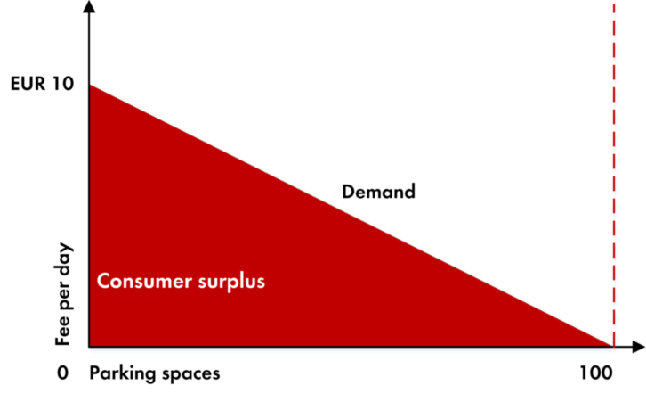
Consumer surplus - a measure of good feeling
When the number of parking spaces is greater than or equal to the number of motorists wanting to park, free parking results in maximum utilisation, no vacant spaces at all. This utilisation is shown by the red area under the demand line.
The red area represents parking utilisation that is not paid for when parking is free. In economics, this is known as the consumer surplus. Consumer surplus is not a tangible surplus, it is a measure of the good feeling that consumers have when they get a better deal than they anticipated.
In fact, in terms of consumer psychology, this good feeling is important to the economy, because a high level of consumer surplus may encourage consumer spending, and that is beneficial to the local economy.
And this is why local businesses and municipalities have to find the right balance when setting parking tariff schemes.
Reduced consumer surplus when spaces are scarce
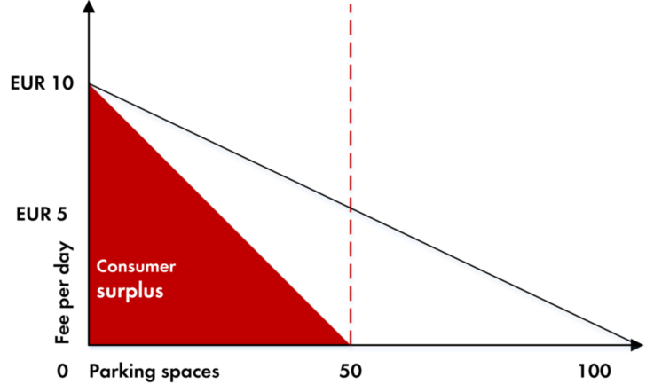
If the number of parking spaces is fewer than the number of motorists wanting to park, the consumer surplus, the good feeling, is reduced by the uncertainty of finding a space to park.
Specifically, if the number of spaces is reduced by 50%, the utilisation of a space is also discounted if parking is kept free of charge. The reduced red area therefore represents the probabilistic consumer surplus.
Looking vainly for parking - an economic loss
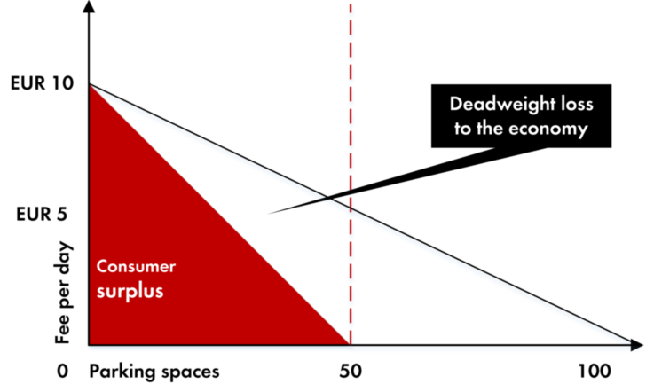
If the number of parking spaces available is reduced, this not only reduces the consumer surplus, its distribution may also be insensitive to the differing needs of motorists. Motorists with a less urgent need to park may end up occupying parking spaces that motorists with more urgent needs are prepared to pay for.
The time they spend looking for a vacant space is known as a deadweight loss to the economy. This loss to society is due to market inefficiencies; these occur when supply and demand are not in equilibrium.
Market equilibrium with paid parking
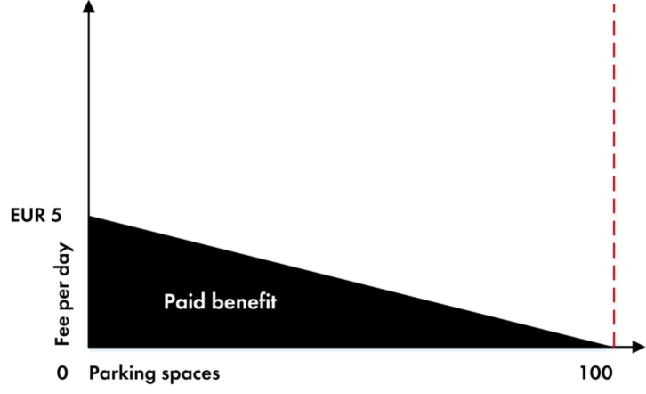
Suppose a fee of EUR 5 per day is charged for parking. And that at this level, demand equals supply, everyone who wants a parking space can find one.
The market has reached an equilibrium because nobody who is prepared to pay EUR 5 is denied a space, and they no longer have to waste time cruising for a place to park. Those who are not prepared to pay EUR 5 look for alternatives.
Total benefit of paid parking
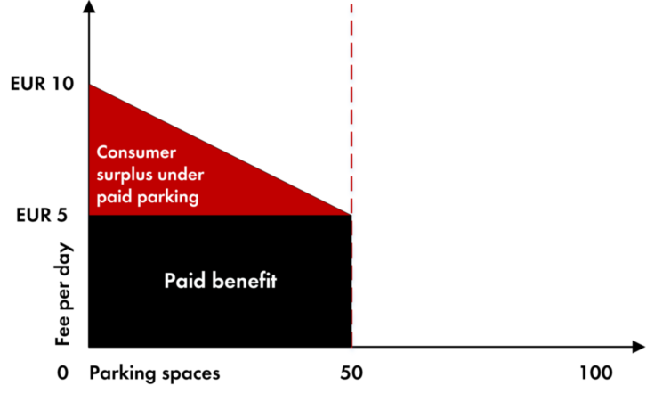
The total benefit of paid parking consists of the black area and the red area. The black area represents the paid benefit received from motorists.
The red area represents the intangible benefit to motorists who would have been prepared to pay more if not for the uniform parking fee. In other words, it is the consumer surplus under paid parking.
Consumer surplus under paid parking

Total benefit - to motorists and local economy
Let us compare the benefit of paid parking versus free parking. If the total benefit of paid parking exceeds the probabilistic consumer surplus under free parking, then paid parking is more efficient than free parking.
It's the total benefit that counts
We only need to compare the black area above that represents paid parking with the red area. It turns out that the red area (consumer surplus under free parking) is equal in area to the black area.
So, the total benefit under paid parking exceeds the total benefit under free parking by the consumer surplus under paid parking (the red shaded area). And it is the total benefit, to both motorists and the local economy, that counts when parking spaces are scarce.
Article adapted from: http://livingeconomics.org/article.asp?docId=292 - Narrated lecture comparing total benefits under free vs paid parking when parking spaces are scarce.
Everybody loves free parking. But when parking spaces are scarce, free parking is inefficient
